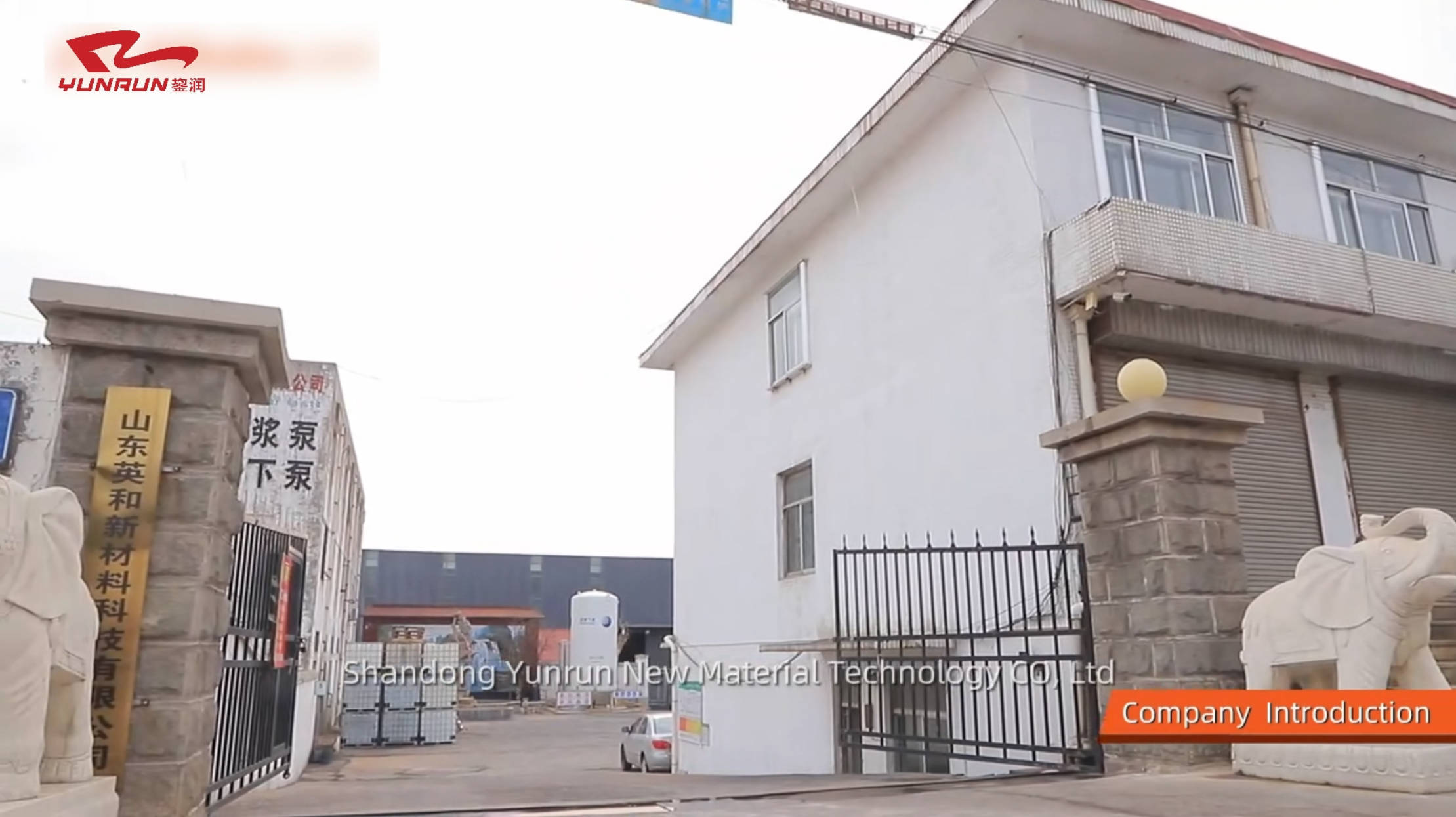Exploring the Advantages of Low Modulus Polyurethane Sealants: A Comprehensive Guide
Exploring the Advantages of Low Modulus Polyurethane Sealants: A Comprehensive Guide
Table of Contents
1. Introduction to Low Modulus Polyurethane Sealants
2. What Are Low Modulus Polyurethane Sealants?
3. Key Properties of Low Modulus Polyurethane Sealants
4. Advantages of Using Low Modulus Polyurethane Sealants
4.1 Flexibility and Elasticity
4.2
Jun 23,2025
Exploring the Advantages of Low Modulus Polyurethane Sealants: A Comprehensive Guide
Table of Contents
- 1. Introduction to Low Modulus Polyurethane Sealants
- 2. What Are Low Modulus Polyurethane Sealants?
- 3. Key Properties of Low Modulus Polyurethane Sealants
- 4. Advantages of Using Low Modulus Polyurethane Sealants
- 4.1 Flexibility and Elasticity
- 4.2 Weather Resistance
- 4.3 Superior Adhesion
- 4.4 Longevity and Durability
- 5. Applications of Low Modulus Polyurethane Sealants
- 6. Best Practices for Applying Low Modulus Polyurethane Sealants
- 7. Frequently Asked Questions (FAQs)
- 8. Conclusion
1. Introduction to Low Modulus Polyurethane Sealants
Low modulus polyurethane sealants have gained popularity in various industries, mainly due to their **exceptional performance characteristics**. These sealants are designed to withstand significant movement while maintaining a robust seal, making them ideal for applications where flexibility is essential. In this article, we will delve into their unique properties, advantages, and applications, empowering you to utilize these materials effectively in your projects.
2. What Are Low Modulus Polyurethane Sealants?
Low modulus polyurethane sealants are **high-performance adhesives** that exhibit a lower modulus of elasticity compared to traditional sealants. This characteristic allows them to remain flexible over time, adapting to the movement and expansion of the materials they bond. They are particularly effective in applications where joints experience dynamic movement, such as in construction and automotive manufacturing.
3. Key Properties of Low Modulus Polyurethane Sealants
To understand why low modulus polyurethane sealants are so beneficial, it’s crucial to explore their key properties:
3.1 Flexibility
These sealants can elongate significantly without losing adhesion, making them suitable for applications involving thermal expansion and contraction.
3.2 Adhesion
Low modulus polyurethane sealants adhere effectively to a variety of substrates, including metals, plastics, and concrete, ensuring a strong bond in diverse conditions.
3.3 Weather Resistance
They provide excellent resistance to UV rays, moisture, and extreme temperatures, making them suitable for outdoor applications where environmental exposure is a concern.
3.4 Chemical Resistance
Low modulus polyurethane sealants demonstrate resistance to various chemicals, oils, and solvents, which is crucial in industrial environments.
4. Advantages of Using Low Modulus Polyurethane Sealants
4.1 Flexibility and Elasticity
One of the most significant advantages of low modulus polyurethane sealants is their **flexibility**. This property allows them to absorb movements without cracking or losing adhesion, making them ideal for applications subjected to vibrations or structural shifts.
4.2 Weather Resistance
These sealants maintain their elasticity and adhesion properties even in harsh weather conditions. Their resistance to moisture, UV radiation, and extreme temperatures ensures long-lasting performance in outdoor applications.
4.3 Superior Adhesion
Low modulus polyurethane sealants provide excellent adhesion to multiple substrates, ensuring a reliable bond. This versatility is particularly beneficial in construction and manufacturing, where various materials may need to be sealed together.
4.4 Longevity and Durability
Low modulus polyurethane sealants are designed to last. Their durability minimizes the need for frequent replacements, making them a cost-effective choice in the long run.
5. Applications of Low Modulus Polyurethane Sealants
Low modulus polyurethane sealants are widely used across different industries due to their unique properties:
5.1 Construction Industry
In construction, these sealants are commonly used for **sealing joints in buildings** and other structures. Their ability to withstand building movement without compromising the seal makes them ideal for use in expansion joints, façade sealing, and glazing.
5.2 Automotive Sector
In the automotive industry, low modulus polyurethane sealants are utilized in **windshield bonding**, panel sealing, and other applications that require a durable, flexible seal. Their excellent adhesion properties ensure a strong bond even in the face of vibrations and temperature fluctuations.
5.3 Marine Applications
Marine environments can be harsh on materials, making low modulus polyurethane sealants an excellent choice for **boat building and maintenance**. They resist moisture and UV exposure, making them ideal for sealing and bonding in marine applications.
6. Best Practices for Applying Low Modulus Polyurethane Sealants
To ensure optimal performance, certain best practices should be followed when applying low modulus polyurethane sealants:
6.1 Surface Preparation
Ensure that surfaces are clean, dry, and free from any contaminants like dust, grease, or oil. Proper surface preparation is crucial for achieving a strong bond.
6.2 Application Method
Apply the sealant using a caulking gun or appropriate dispensing method, ensuring a continuous bead without gaps. For best results, follow the manufacturer’s recommendations regarding the size of the bead.
6.3 Curing Time
Allow the sealant to cure fully before exposing it to environmental stress. Curing times may vary based on environmental conditions, so consulting the product specifications is essential.
7. Frequently Asked Questions (FAQs)
7.1 What is the difference between low modulus and high modulus polyurethane sealants?
Low modulus sealants are designed for flexibility and movement, while high modulus sealants are more rigid and best suited for static applications.
7.2 Can low modulus polyurethane sealants be painted?
Yes, many low modulus polyurethane sealants can be painted over after curing. However, it’s essential to confirm compatibility with the paint and follow the manufacturer’s guidelines.
7.3 How long do low modulus polyurethane sealants last?
The longevity of these sealants depends on environmental conditions and the application; however, they typically last several years when applied correctly.
7.4 Are low modulus polyurethane sealants environmentally friendly?
Many manufacturers are producing low modulus polyurethane sealants with low VOC emissions, making them more environmentally friendly options.
7.5 Can I use low modulus polyurethane sealants in submerged applications?
Yes, certain formulations of low modulus polyurethane sealants are suitable for use in submerged applications, such as in marine environments. Always check the product specifications.
8. Conclusion
In conclusion, low modulus polyurethane sealants offer a remarkable combination of flexibility, durability, and adhesion, making them an invaluable resource in various industries. Their unique properties enable them to perform well under diverse environmental conditions, ensuring long-lasting performance. Whether in construction, automotive, or marine applications, understanding and leveraging the advantages of these sealants will contribute to the success and longevity of your projects. By utilizing low modulus polyurethane sealants, you are not only ensuring a strong bond but also enhancing the overall quality and reliability of your applications.
PREVIOUS:




